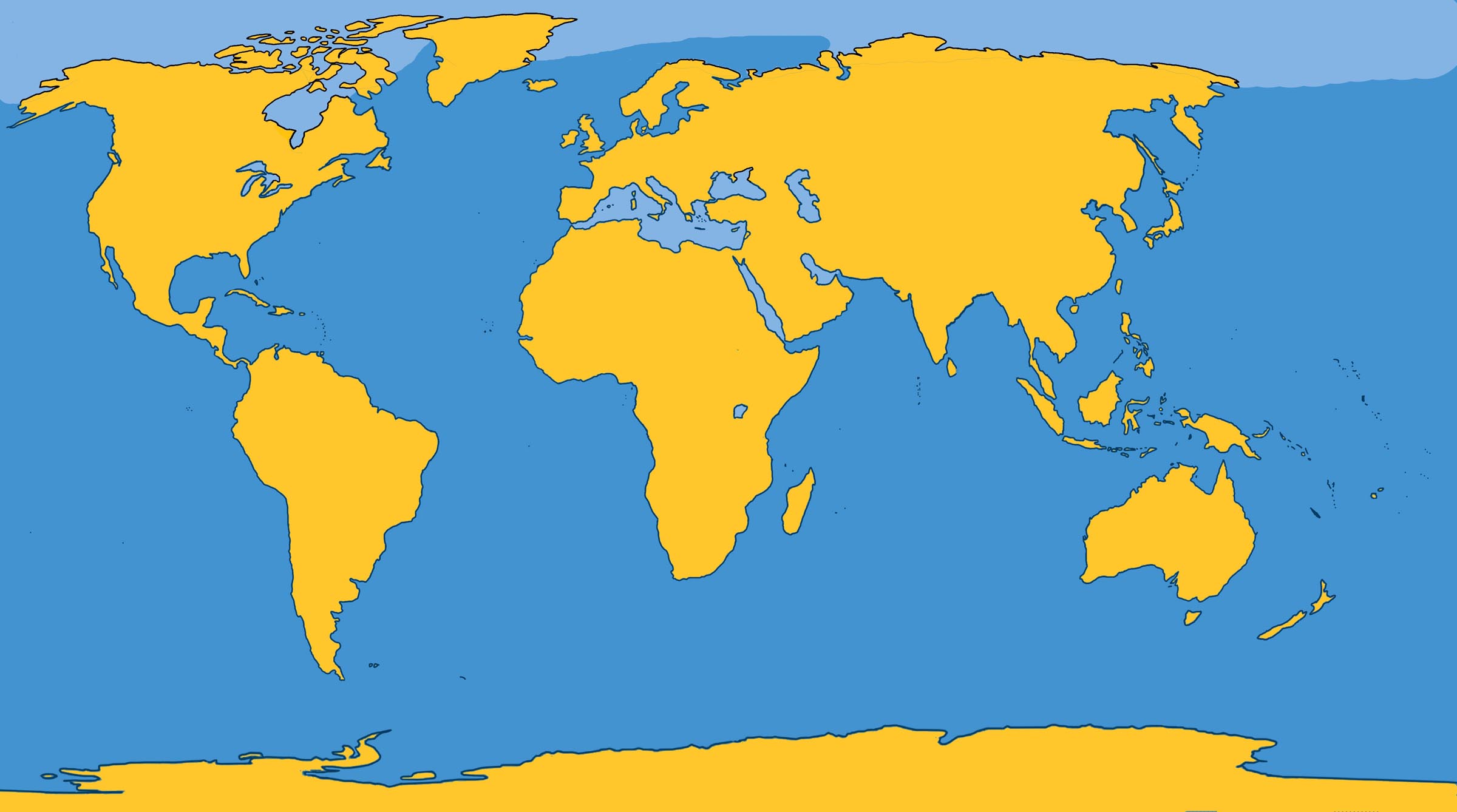 Family: Balaenopteridae
Family: Balaenopteridae
Genus: Balaenoptera
Species: B. physalus (Linnaeus, 1758)
With its long streamlined body, its gracefully pointed face, and its thin flukes, the fin whale might be considered to have classis rorqual features. Fin whales are the only cetacean asymetrically colored; the right side of the fin whale’s lower jaw and its right side baleen plates are white, while those of the left side are dark. They are fast and agile swimmers and work in pairs to round up and capture schools of fish. It is suspected that the white coloration on the right side of the whale’s face may play a role in feeding strategies. They are shy animals, compared to Bryde’s or minke whales, which are known for their tendency to approach boats and ships. Fin whales have been observed swimming with blue whales in some areas, including the Gulf of St. Lawrence. Fin whales seldom lift their flukes prior to lengthy dives, and they are not inclined to leap from the water, as do others of their family.
Physical Description: The body is long and slender. The rostrum closely resembles that of the blue whale but is thinner, more pointed, and always has a single central ridge. Fifty to 100 tactile hairs are found on the tips of the upper and lower jaws, with a distinctive clump of hairs at the tip of the lower jaw.
Color: Dark gray to brown dorsal and flank regions lighten to white ventral areas. Dark dorsal coloration extends farther down on the left side than the right, a feature unique among all cetaceans. Inside and outside of the right lower lip, and sometimes the upper lip as well, are yellow-white; the whalebone plates in that region are also yellow-white, while all other plates are yellow-gray. On most animals a gray-white chevron is located along the back and just behind the head.
Fins and Flukes: Prominent falcate dorsal fin 2 ft (60 cm) high is located far back of the dorsal ridge. Flippers are thin and pointed at the tips. The flukes are nearly identical to those of the blue whale: large, thin, pointed at the tips, very well defined, with a definite median notch.
Length and Weight: Fin whales reach 88 ft (27 m) and 80 tons (73,000 kg). Average length is 64.5 ft (20 m). Females are slightly larger than males. Fin whales in the Northern Hemisphere average about 5 ft (1.5 m) smaller at maturity than those of the Southern Hemisphere.
Throat Grooves: Fifty to 100 ventral grooves about 3 in (7.5 cm) apart extend slightly beyond the navel.
Baleen Plates: There are 350 to 360 baleen plates on each side of the upper jaw averaging 36 in (90 cm) in length, bluish-gray to white in color.
Feeding: Small crustaceans, North Atlantic populations also feed on capelin. North Pacific populations feed on small pelagic fish such as mackerel, tomcod, herring, saury, and even squid.
Breathing and Diving: Five to 6 breaths at intervals of several minutes preceding a dive lasting up to 15 minutes. A fin whale can dive to at least 755 ft (230 m). The blow, 15 to 20 ft (4.5 to 6 m), resembles an inverted cone. These whales seldom raise their flukes prior to longer dives.
Mating and Breeding: The calf, 21 ft (6.5 m) long, weighing 4 tons (3,600 kg), is born after an 11.5 month gestation. It is weaned after about 6 to 7 months when it has reached 39 ft (12 m). Sexual maturity is attained at 10 to 13 years when males are about 60 ft (18.5 m), females about 65 ft (19.8 m) long. Calving occurs at 2 to 3 year intervals. They are thought to be monogamous; much affectionate behavior is exhibited.
Herding: Often observed in groups exceeding 100, but normally singly to 10 animals.
Distribution: Fin whales inhabit all oceans, although they apparently avoid shallow waters and coastal regions. They frequent approximately the same waters as the blue whales. The largest population seems to be in Antarctic waters.
Migration: Apparently these whales feed in cold water regions during summer and return to warm waters for mating and breeding in winter. It has been noted that migration is irregular, perhaps because they are following food fish.
Natural History Notes: Fin whales are thought to live to between 75 and 100 years.
FIN WHALE DISTRIBUTION








